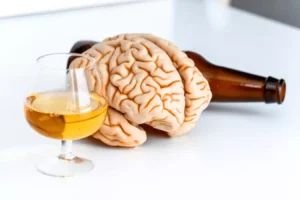Effective Strategies for Relapse Prevention in Addiction Recovery
- Sober living
- 5 de outubro de 2023

Specifically, RP was most effective when applied to alcohol or polysubstance use disorders, combined with the adjunctive use of medication, and when evaluated immediately following treatment. Moderation analyses suggested that RP was consistently efficacious across treatment modalities (individual vs. group) and settings (inpatient vs. outpatient)22. Many physical relapses occur during times when the individual believes their use will go undetected.
Behavioral Therapy Is Part of a New York, NY Relapse Prevention Program

Using 1-way random-effects models, interrater consistency was adequate for mean ratings of competence (intraclass correlation coefficient, 0.77), with mean (SD) competence rated between adequate and good (4.63 0.42). In the face of a craving, it is possible to outsmart it by negotiating with yourself a delay in use. It hinges on the fact that most cravings are short-lived—10 to 15 minutes—and it’s possible to ride them out rather than capitulate. Learning techniques of mindfulness allows you to distance yourself from the e craving and examine it rather than automatically accept its command. If you are at a gathering where provocation arises because alcohol or other substances are available, leave. Cravings can intensify in settings where the substance is available and use is possible.
Recognizing Your High-Risk Situations
- Experts in the recovery process believe that relapse is a process and that identifying its stages can help people take preventative action.
- By having clear goals in mind, you can measure your progress and celebrate your achievements along the way.
- When clinicians and scientists refer generally to CBT for substance use disorder, it is often Marlatt’s RP model or some related approach to which they are referring.
- Supervised treatment with disulfiram has correlated with an increased time to relapse and a reduced number of drinking days.13 Disulfiram has been shown superior to naltrexone and acamprosate but only when used in observed dosing.
Relapse prevention focuses on building the awareness necessary to recognize the early stages of relapse. It also provides the skills to change your behavior and avoid misusing substances again. Cindy and her incomparable team aid individuals in remaining free from the shackles of active drug and alcohol addiction, as well as other co-occurring self-harming actions and disorders. The more consistent, steady, and balanced your life is, the less likelihood of you being tempted to relapse.
Identifying Triggers
Awareness of thoughts, feelings, and behaviors can be indicators of where someone is and what they may need regarding recovery. A person’s support system may also play an important role in recovery and the avoidance of relapse. Family counseling and therapy sessions may help loved ones to better understand the disease of addiction and learn to recognize potential relapse triggers and ways they can support in those instances. Communication skills and the overall family dynamic may improve through family therapy as well. CBT is a form of psychotherapy that helps identify negative thoughts that lead to substance abuse. CBT effectively reduces the risk of relapse and is an integral component of the recovery process.
What is a Relapse Prevention Plan?

Assess whether your goals, triggers, and coping strategies are still accurate and sufficient. Make adjustments as needed to reflect your evolving recovery journey. These goals should be realistic and aligned with your individual needs. Whether it’s maintaining sobriety, managing symptoms, or improving overall well-being, having a target to work towards provides a sense of purpose and direction.

It further prevents relapse as it decreases feelings of loneliness and the risk of isolation, both of which can be common triggers for relapse. Common post-acute withdrawal symptoms when recovering from addiction include insomnia and fatigue. The New York Office of Alcoholism and Substance Abuse Services (OASAS) reports that these are common potential triggers for relapse. By implementing physical exercise and a balanced diet, one can improve their quality of sleep. This can be done by setting up and following a structured sleep, exercise, and eating schedule. By doing this, one can retrain the body to sleep better and will also help https://ecosoberhouse.com/article/what-to-do-if-the-person-you-love-is-an-addict/ reduce the risk of relapse.
Utilizing the Relapse Prevention Plan Template

These goals can be short-term or long-term, and they should be specific, measurable, achievable, relevant, and time-bound (SMART). By setting SMART goals, you can stay focused and motivated throughout your recovery journey. One of the key roles of a relapse prevention plan is to increase self-awareness. It encourages you to reflect on your past experiences and identify patterns or situations that have led to relapse in the past.
- Groups like Alcoholics Anonymous, Narcotics Anonymous, and SMART Recovery provide invaluable help, resources, and substance abuse group activities.
- Remember, a relapse prevention plan is not a guarantee against relapse but rather a valuable resource that supports your ongoing effort to live a healthier, happier, and more fulfilling life.
- Take the time to carefully read and complete each prompt, reflecting on your own experiences and needs.
What Is a Relapse Prevention Plan?
By pinpointing relapse prevention these high-risk situations, you can proactively plan how to cope with them. This may involve developing alternative strategies for managing stress, seeking support from trusted individuals, or avoiding certain environments altogether. By taking the time to reflect on your past experiences and analyzing the situations that led to relapse, you can start to identify patterns and common themes. This self-awareness will serve as a foundation for developing effective strategies to manage and cope with your triggers.
Surround yourself with individuals who understand your journey and can provide guidance, encouragement, and accountability. Support can come from friends, family, support groups, or professional therapists. For example, if you used to frequent a particular bar or hang out with a group of friends who still engage in substance use, these can be external triggers that you need to be aware of. On the other hand, internal triggers such as feeling overwhelmed at work or experiencing a conflict in your personal relationships can also increase the risk of relapse.